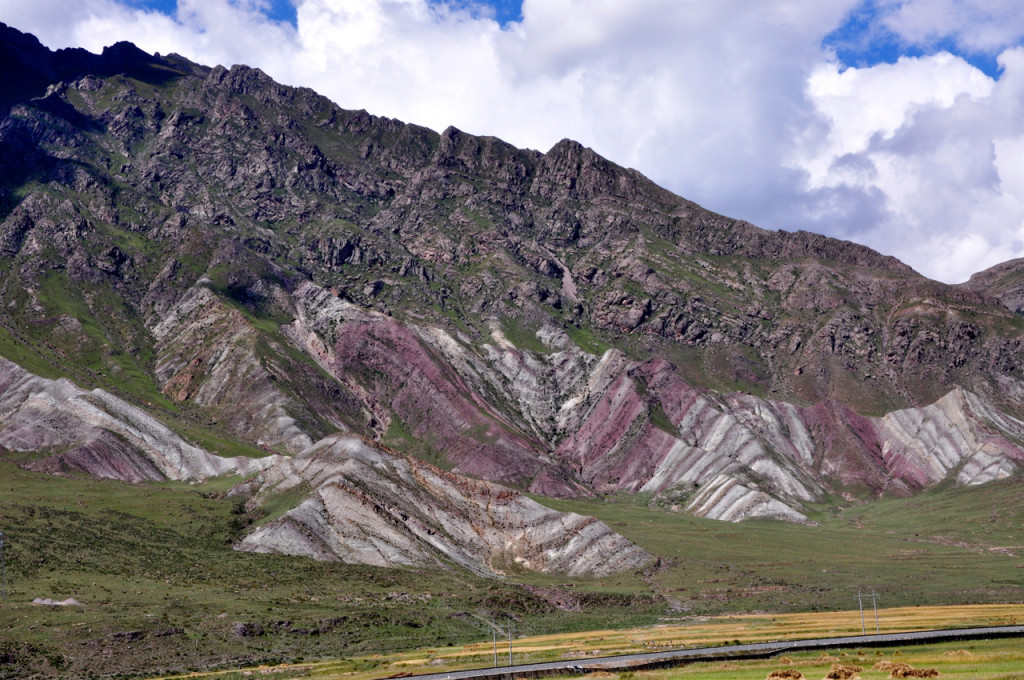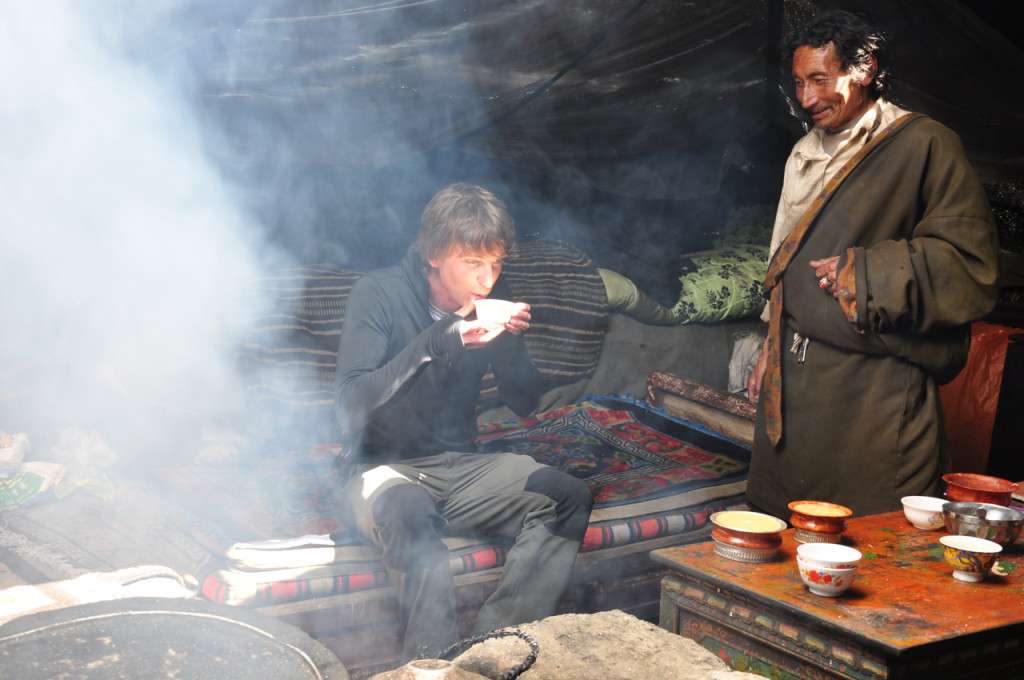Owen completed a PhD from Oxford in July 2014, he is currently a postdoctoral fellow at Nagoya University, Japan as part of the Japan Society for the Promotion of Science and will be starting as a visiting fellow at the Geologic Survey of Canada in January 2015.
I recently completed my PhD at Oxford University, researching the formation of the Tibetan plateau. The plateau is aptly referred to as `The Roof of the World’ as it is the largest region of high elevation on Earth, with an average altitude of over 5000 m. This great elevation is underlain by the thickest crust (up to 90 km) and continental lithospheric root (up to 300 km) known on Earth, making Tibet a land of superlatives that has long captured the scientific imagination. Intense multidisciplinary study has led to a first-order understanding that the plateau formed as a consequence of the ongoing collision between India and Eurasia since c. 50 Ma. However, several aspects of this understanding remain disputed, such as what were the boundary conditions at the onset of collision, and how significant were older accretion events in the plateau interior?

This spectacular c. 70 Ma regional angular unconformity in southern Tibet raises questions about the pre-collisional history of the plateau. Telegraph pole for scale.
The aim of my PhD was to explore these questions using metamorphic rocks sampled from the region, as they contain a record of past tectonic events. This record can be decoded by integrating field, petrographic, thermobarometric and geochronogical techniques to elucidate pressure–temperature–time–deformation (P-T-t-d) paths. P-T-t-d paths directly parametrise past tectonic processes, and provide essential data to interpret the crustal history of a region. My studies used state-of-the-art analytical techniques, including a sensitive high-resolution microprobe (SHRIMP) to resolve complex mineral growth histories, and pseudosection modeling to conduct the thermobarometry, in order to provide the most advanced P-T-t-d understanding. Historically, there have been few metamorphic studies of the plateau interior, largely due to geopolitical isolation. However, as access is progressively improving, more metamorphic localities are being located. This is where my PhD enters the frame, as I went to map some newly discovered regions over two field seasons in 2010 and 2011.

All geology is big in Tibet, such as these megacrystic quartz-kyanite veins from the Danba region of eastern Tibet.
I entered Tibet by flying into the capital, Lhasa. Rarely has the term breathtaking been so apt, as you step off the plane at an altitude of 3,500m. Even after a period of acclimatisation, Tibet remains a lung-bursting place to conduct fieldwork. During my two field campaigns I visited three regions in southern and eastern Tibet, focusing on tectonic settings where high-grade metamorphic rocks are exposed at the surface. Although on long wavelengths the plateau is flat, the regions I visited were distinctly mountainous, with excellent exposure along the glacially etched valley walls. Each of these I mapped and sampled through traverse, using a 4WD to gain access as far up valleys of interest as possible, and then hiking and camping the rest of the way.
It is not legal to travel alone in Tibet, so I was joined at all times by a local guide, who acted as my translator. I also had help with the geological translation, as colleagues and supervisors from Oxford, Canada and China joined me variously throughout the trips. Conditions were favourable for fieldwork, with largely clear weather as I travelled in the short window between monsoon and winter, although an unseasonal blizzard did spectacularly catch me out once and the mornings were relentlessly cold. Food largely consisted of porridge, peanuts and boiled yak meat when I was camping, with rather more variety and vegetables when I was not, with the culinary highlight being the spicy Sichuan food in eastern Tibet.
For one particularly long traverse I hired a horse to share the burden and the owner, a nomadic farmer, also joined us. It transpired that his family lived en-route, and I enjoyed a culturally engaging (if stomach turning) afternoon drinking yak butter tea in their tent. This provided a fascinating insight into their traditional way of life, which you sense, even after just a short time there, is being rapidly eroded. The trips were the literal and metaphorical high point of my PhD, and I feel privileged to have been able to contribute to our understanding of the region. Although my PhD was envisaged to comment on the recent history of the plateau, nearly all of the metamorphic localities that I sampled bore a record of late Triassic-early Jurassic metamorphism, which resulted from the closure of the Paleotethyan ocean, long before the Neotethyan ocean was closed and India collided with Asia. The results indicate that the roof of our world has a long and complex history of accretion and crustal thickening, which is ripe for future research.
For further information, please see the following two papers in the Journal of Metamorphic Geology:
- Weller et al. (2013) Quantifying Barrovian metamorphism in the Danba Structural Culmination of eastern Tibet, doi: 10.1111/jmg.12050
- Weller et al. (2014) Quantifying the P–T–t conditions of north–south Lhasa terrane accretion: new insight into the pre‐Himalayan architecture of the Tibetan plateau, doi: 10.1111/jmg.12112

The results of my PhD indicate that these 7000 m peaks in the Basong Tso (lake) region of southern Tibet resulted from late Triassic accretion of the north and south Lhasa terranes.
![]() This work is licensed under a Creative Commons Attribution-NonCommercial-ShareAlike 4.0 International License.
This work is licensed under a Creative Commons Attribution-NonCommercial-ShareAlike 4.0 International License.


